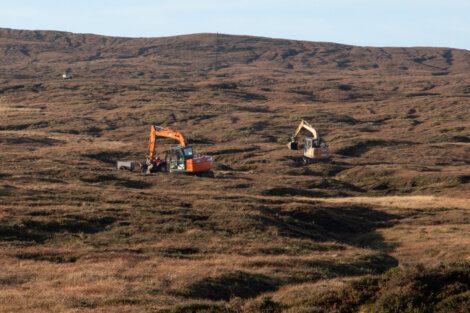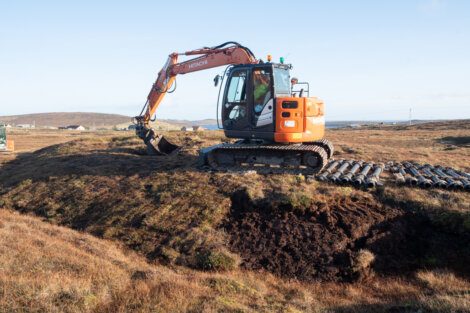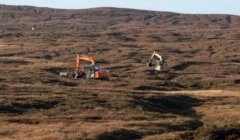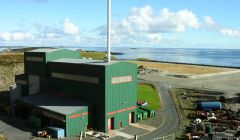Community / New funding to accelerate peatland restoration programme
SHETLAND Amenity Trust is looking for a second peatland restoration officer to accelerate its programme of turning the isles’ degraded bogs from carbon emitters to carbon sinks.
The trust has received two-year funding from the Peatland ACTION programme, administered by government’s conservation agency NatureScot, which will help them to work through a backlog of projects and sign on new areas for restoration.
The new restoration officer will join Sue White who has been working part-time for a number of years to get the peatland restoration work underway locally.
Shetland’s vast moorlands are generally in a very poor state and are emitting thousands of tonnes of carbon dioxide due to centuries of peat cutting and overgrazing by sheep.
The climate value of the world’s peatlands is only slowly entering public conscience, but efforts are now underway worldwide to restore moorlands to their original state.
It is estimated that degraded peatlands emit anything between four and 23 tonnes of carbon dioxide equivalent (CO2e) per hectares per year; and there are 40,000 hectares of it in Shetland alone.
Since 2012, around 25,000 hectares of peatland has been restored across Scotland. In Shetland, the programme has funded 15 individual projects with a total area of 400ha, which is four square kilometres.
The work generally involves filling in draining ditches to raise the water level, reprofiling bare peat faces and putting back vegetation to stop the loss of carbon.
A large peatland restoration project has been underway for some time at Girlsta, in the moorland to the west of the A970 road.
The trust’s head of engagement Sandy Middleton said following the COP26 climate conference in November peatland restoration has moved up the political agenda.
Become a member of Shetland News
She said the confirmation of new funding for SAT should be seen as the first piece in a jigsaw that would hopefully lead to more landowners and managers seeing the benefits of peat restoration which in turn would create the demand for local companies to invest in equipment and skills to be able to carry out the specialist work.
“A Shetland company has set up to do this [Shetland Peat Restoration] and they have invested to get the right training and the right machinery to do this,” she said.
“That’s one company and a handful of people in Shetland skilled enough to operate the machinery to do this work – if we want to do peatland restoration at scale then we need more people trained up to deliver that.”
She added that peatland restoration was increasingly becoming attractive for larger businesses as a climate mitigation measure worth investing in.
“There is a lot of drive to do carbon offsetting simply because businesses are required to do net zero work, (…) and the financial drivers around carbon offsetting will also increase,” Middleton said.
“If there are specific targets for net zero set by governments, and companies have problems meeting those, the demand for carbon offsetting through peat restoration will grow.”
Those financial incentives will become more robust and reliable once it is possible to certify exactly how much carbon dioxide has been removed from the atmosphere by restoring an area of peatland.
Middleton said she would be interested to hear from any local companies prepared to explore investing in peat restoration as part of its efforts to offset its carbon footprint.
Meanwhile, Shetland Amenity Trust is inviting anyone interested to its next peatland restoration demo day next Thursday (17 February). More information and how to get involved can be found here.
Become a member of Shetland News
Shetland News is asking its readers to consider paying for membership to get additional perks:
- Removal of third-party ads;
- Bookmark posts to read later;
- Exclusive curated weekly newsletter;
- Hide membership messages;
- Comments open for discussion.
If you appreciate what we do and feel strongly about impartial local journalism, then please become a member of Shetland News by either making a single payment, or setting up a monthly, quarterly or yearly subscription.











































































